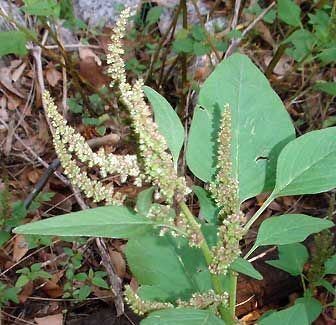Purple amaranth
(Amaranthus polygonoides)

Description
Amaranthus blitum, commonly called purple amaranth or Guernsey pigweed, is an annual plant species in the economically important plant family Amaranthaceae. Amaranthus blitum is an erect or semi-prostrate annual plant. The single or branched stem can grow to one metre (three point three feet) tall. The green or purplish leaves are up to 10 cm (4 in) long on stalks of a similar length and are arranged spirally. They are simple, roughly triangular in shape and have entire margins. The inflorescence is a spike with the tiny male and female flowers clustered together. The fruits are small globular capsules containing disc-shaped seeds. Native to the Mediterranean region, it is naturalized in other parts of the world, including much of eastern North America, much of tropical Africa, Western Europe and Japan. In Britain it was first recorded in the wild in 1771 when it appeared in Essex. It occurred more frequently in scattered locations in southern England in the 19th century but has since decreased. It is established in Guernsey and elsewhere as a casual plant, springing up on waste ground, rubbish tips and cultivated areas, probably from wool waste, coconut fibre or birdseed. Although not cultivated, this plant is gathered from the wild and eaten in many parts of the world. The Greeks call the Amaranthus blitum var. silvestre, vlita (Modern), and eat the leaves and the tender shoots cooked in steam or boiled and then served with olive oil, lemon and salt. Similarly, it is also picked as young shoots in Lebanon and cooked in olive oil, onion, chilli, and burghul, seasoned with salt and drizzled with lemon juice before eating with pita bread. It is considered a side dish and particularly popular in the north of Lebanon. The closely related Amaranthus viridis, the slender amaranth or green amaranth, is also widely eaten. Amaranthus is a cosmopolitan genus of annual or short-lived perennial plants collectively known as amaranths. Some amaranth species are cultivated as leaf vegetables, pseudocereals, and ornamental plants. Most of the Amaranthus species are summer annual weeds and are commonly referred to as pigweeds. Catkin-like cymes of densely packed flowers grow in summer or autumn.
Taxonomic tree:







